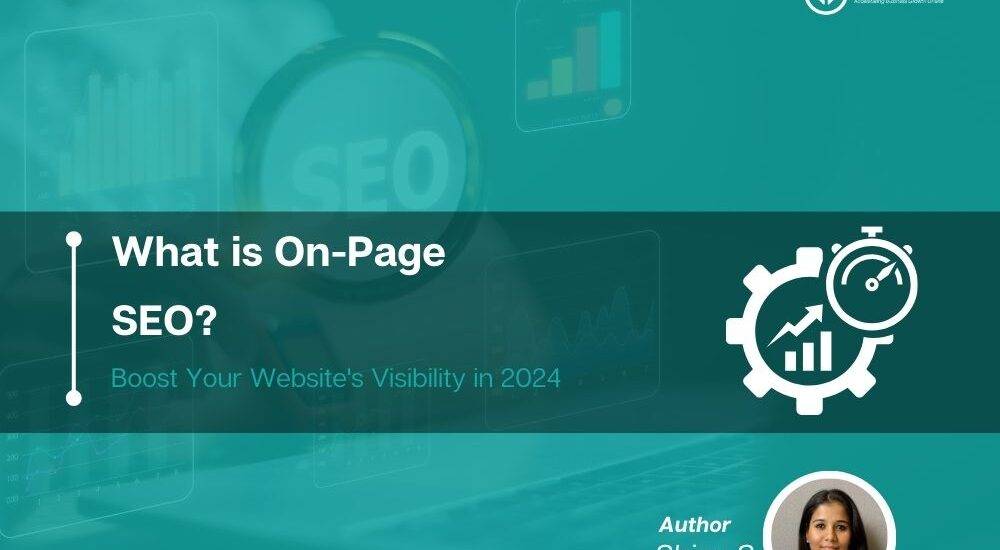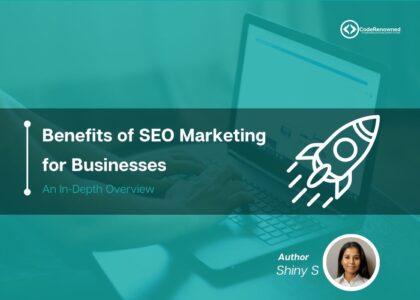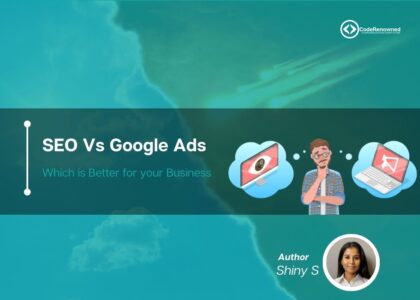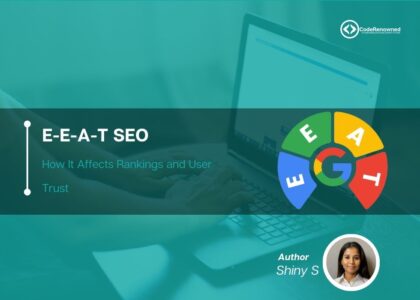What is On-Page SEO?
Boost Your Website's Visibility in 2024
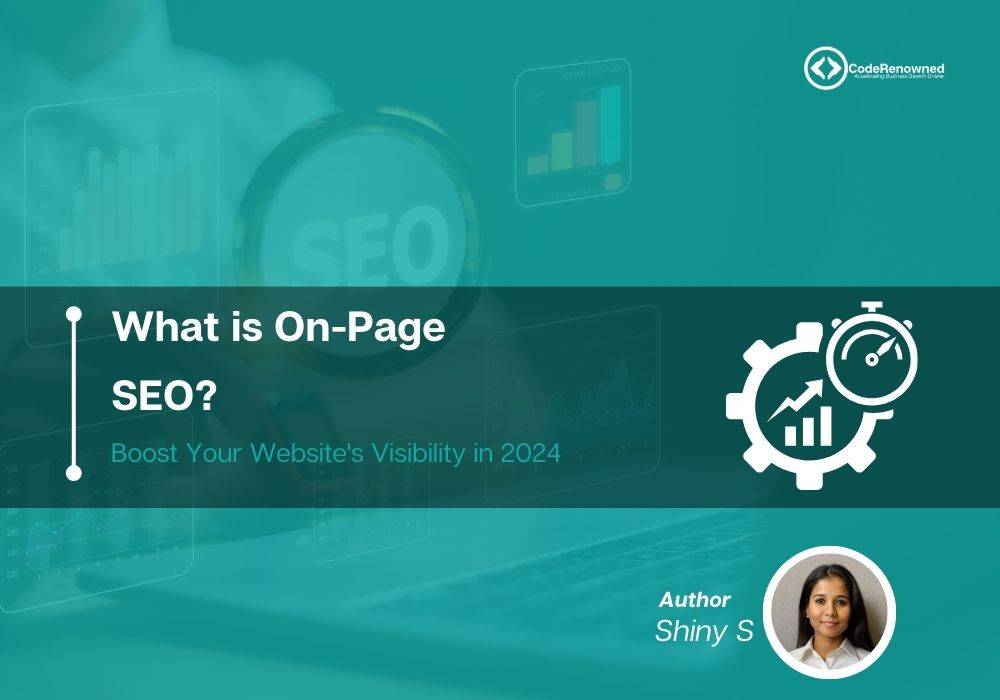
In today’s digital Outlook, millions of websites compete for attention. Having a well-optimized website is essential for attracting organic traffic. Search Engine Optimization (SEO) role is to improve the website’s visibility and drive qualified leads. There are various aspects to SEO, but On-page optimization is an essential component that directly impacts a website’s performance in search engine results. Let’s dig into effective on-page SEO strategies to boost your website’s visibility and attract more visitors.
What is On-Page SEO?
On-page SEO guides to the optimization procedures applied directly on the website to improve its visibility in search engine results pages (SERPs). Off-page SEO focuses on external factors like backlinks, and on-page SEO focuses on optimizing content, HTML source code, and website design. By aligning a website’s elements with search engine algorithms, one can improve its applicability, control, and user experience, leading to higher rankings and increased organic traffic.
- Keyword Research and Optimization
- Creating High-Quality Content
- Optimizing Meta Tags and Descriptions
- Improving Website Structure and Navigation
- Optimizing Images and Multimedia
- Mobile-Friendly Optimization
- Monitor and Analyze Performance
Keyword Research and Optimization
- Keyword research forms the foundation of on-page SEO. It involves identifying the terms and phrases the target audience uses to search for appropriate information.
- Leveraging keyword research tools like Google Keyword Planner, SEMrush, or Ahrefs can uncover valuable insights into search volume, competition, and user intent.
- Identify relevant keywords and strategically incorporate them into your website’s content, including titles, headings, meta descriptions, and body text.
- Ensure keyword usage appears natural and doesn’t compromise the readability or user experience.
Creating High-Quality Content
Content is the ruler in the domain of SEO.
- High-quality, informative, and engaging content attracts visitors and encourages them to stay longer and analyze other pages on the website.
- Blog posts, product descriptions, or landing pages classify content that addresses the needs and interests of your target audience.
- Produce comprehensive, in-depth content that covers the topic.
- Long-form content may perform better in search results and provide more value and relevance to users.
- Include relevant keywords thoughtfully throughout the content while maintaining a natural flow.
Optimizing Meta Tags and Descriptions
- Meta tags, with title tags and meta descriptions, play a critical role in On-page SEO. These HTML elements provide search engines with essential information about web pages.
- Optimize title tags to precisely reflect the content of each page while including primary keywords.
- Keep title tags brief, generally within 50-60 characters, to ensure they display effectively in search results.
- Compelling meta descriptions attract users to click through to your website.
- Meta descriptions don’t directly influence rankings but hold click-through rates (CTR), which impacts SEO performance.
- Including relevant keywords and a clear call-to-action (CTA) encourages user engagement.
Improving Website Structure and Navigation
- A well-organized website design improves user experience and encourages search engine crawling and indexing.
- Ensuring the website’s navigation is intrinsic and user-friendly and allows visitors to find information.
- Create a logical ranking of pages with clear categories and subcategories to guide users through the website seamlessly.
- Optimize URL structures to be descriptive and SEO-friendly. Including relevant keywords in URLs provides search engines with additional context about the content.
- Avoid using long, complex URLs with unnecessary parameters, as they can hinder crawlability and readability.
Optimizing Images and Multimedia
- Visual content plays an integral role in engaging users and improving the overall aspect of the website.
- Optimizing images and multimedia elements for both search engines and users is necessary.
- Using descriptive filenames and alt tags provides context for images, making them more discoverable in image search results.
- Optimize image file sizes to improve page load times for user experience and SEO. Compress images without compromising quality with Adobe Photoshop, TinyPNG, etc.
Mobile-Friendly Optimization
- With the increase of mobile devices, websites for mobile users have become critical.
- Google’s mobile-first indexing organizes mobile-friendly websites in search results, making mobile optimization an essential aspect of on-page SEO.
- Ensure the website is responsive and adapts to various screen sizes and devices.
- Implement mobile-friendly design practices, like readable fonts, scalable images, and touch-friendly navigation, to enhance the mobile user experience.
- Test the website across different devices and browsers to identify and address any issues that may arise.
Monitor and Analyze Performance
- Regular monitoring and analysis measures the significance of your on-page SEO efforts and identify areas for improvement.
- Utilize web analytics tools like Google Analytics or Adobe Analytics to track key metrics like organic traffic, bounce rate, and conversion rate.
- Pay close attention to rankings and organic traffic, as they can indicate the impact of your optimization efforts.
- Conduct regular audits to identify technical issues, broken links, or outdated content that may affect the website’s performance.
- Use understandings gathered from analytics to refine your on-page SEO strategies and stay ahead of the competition.
Conclusion:
On-page SEO is crucial for maximizing the website’s visibility and attracting qualified traffic. By implementing effective on-page optimization strategies, like keyword research, content creation, meta-tag optimization, and mobile-friendly design, one can improve a website’s relevance, authority, and user experience.
SEO is an ongoing process that requires continuous refinement and adaptation to evolving search engine algorithms and user behaviors. Be Informed about industry trends and best practices, and be aggressive in optimizing your website to achieve maintained success in search rankings. A strategic approach to on-page SEO can elevate your website’s visibility and drive meaningful results for your business.


